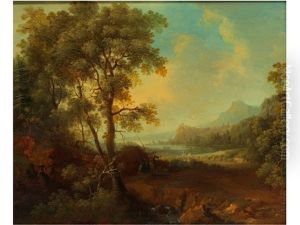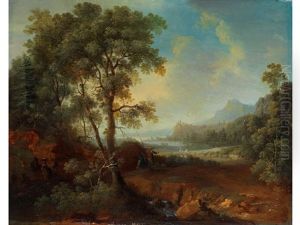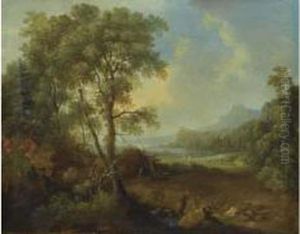Leonhard Trippel Paintings
Leonhard Trippel was a Swiss-born sculptor who gained prominence during the late 18th century. Born on March 9, 1747, in Schaffhausen, Switzerland, he is recognized for his work in the neoclassical style, which was prevalent during that period. Trippel's early artistic talent was evident, and he was initially trained by his father, who was also a sculptor.
In pursuit of furthering his artistic education, Trippel traveled extensively across Europe. He spent time in Paris, where he was influenced by French neoclassicism, and subsequently moved to Rome in 1772. Rome was the epicenter of neoclassical art, and it was there that he honed his craft, studying ancient classical art and drawing inspiration from the works of other artists of the time.
During his time in Rome, Trippel became associated with the circle of Johann Joachim Winckelmann, a German art historian and archaeologist who was a major figure in the neoclassical art movement and had a significant influence on Trippel's work. Trippel's sculptures often reflected the clean lines, idealized forms, and restrained emotions characteristic of neoclassicism.
One of his most notable works is the bust of Johann Joachim Winckelmann, which he created in 1777. This work exemplifies Trippel's skill in portraiture, capturing both the physical likeness and the intellectual spirit of his subject. His other important works include statues and busts of various historical figures and mythological subjects, showcasing his ability to convey nobility and grace through marble.
Trippel's reputation grew, and he received commissions from several European courts. Despite his success, his life was not without challenges, including financial difficulties and health issues. Leonhard Trippel passed away on June 6, 1806, in Rome, but his work left a lasting legacy in the world of neoclassical sculpture and continues to be studied and admired by art historians and enthusiasts alike.






